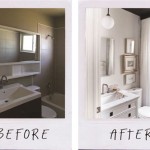Understanding the Costs Associated with Removing a Bathroom Cabinet
Removing a bathroom cabinet, whether due to damage, renovation plans, or simply a desire for a different aesthetic, is a common home improvement project. However, what appears as a straightforward task can quickly involve unexpected complexities and associated costs. Understanding these potential expenses before embarking on the project is critical for accurate budgeting and avoiding unwelcome financial surprises. This article will delve into the various factors that influence the cost of bathroom cabinet removal, encompassing labor, materials, disposal fees, and potential unforeseen repairs.
The final cost of removing a bathroom cabinet is rarely a fixed figure. It is more commonly influenced by a combination of factors including the cabinet’s size and construction, its method of installation, the condition of the surrounding areas, the local labor market, and any supplementary services required. Addressing each of these aspects will provide a comprehensive overview of the potential financial outlay.
Factors Influencing the Base Removal Cost
The most basic aspect of the removal process itself carries a cost. This primarily focuses on the labor involved in physically detaching the cabinet from the wall, floor, or both. The complexity of this task directly impacts the timeframe and consequently, the labor expenses. Consider these factors:
First, the size and type of the cabinet are significant. A small, wall-mounted cabinet will generally be quicker and easier to remove than a large vanity with multiple drawers and a countertop. Larger cabinets require more manpower, potentially necessitating two or more individuals for safe removal. This increased labor translates directly into a higher cost.
Second, the method of installation plays a crucial role. Cabinets that are simply screwed into the wall studs are relatively straightforward to remove. However, if the cabinet is heavily adhered with construction adhesive or features intricate mounting hardware, the removal process becomes more challenging and time-consuming. Cabinets integrated into the plumbing system will also require additional steps to disconnect the water supply and drain lines, further increasing the removal complexity and potential costs.
Third, the accessibility of the cabinet influences the removal effort. A cabinet located in a cramped bathroom, particularly a small powder room, will be more difficult to maneuver and remove compared to a cabinet in a spacious bathroom. Limited workspace can hinder the use of power tools and require more manual labor, impacting the overall cost.
Finally, the labor rate in the region is a key determinant. Rates vary significantly depending on geographical location, the demand for skilled labor, and the experience level of the contractor. Researching the average hourly rate for handyman services or demolition contractors in your area is essential for establishing a realistic budget.
Additional Costs: Addressing the Aftermath
Removing the cabinet itself is only one part of the cost equation. The removal process often reveals underlying issues that require remediation. These can include damages to the surrounding walls, floors, or plumbing, and improper disposal of the removed cabinet.
Damage to the surrounding wall is common. When a cabinet is removed, it often leaves behind holes, scrapes, and damaged paint. Repairing these imperfections is usually necessary to prepare the wall for painting or the installation of a new cabinet. The cost of wall repair will depend on the extent of the damage. Minor repairs might involve filling small holes and applying touch-up paint, while more significant damage could require patching drywall, sanding, and repainting the entire wall to ensure a seamless finish.
Similarly, damage to the flooring underneath the cabinet can occur. If the cabinet was installed before the flooring, removing it might expose an unfinished area. Replacing or repairing this section of the flooring will add to the overall cost. This could involve patching the existing flooring with matching materials, installing new tiles, or even replacing the entire floor depending on the condition and availability of matching materials.
Addressing plumbing issues is another potential cost. Disconnecting the plumbing to remove a vanity cabinet requires care to avoid leaks or damage to the existing pipes. If the plumbing is old or corroded, it might be necessary to replace sections of the pipes or shut-off valves. This is best handled by a qualified plumber, and their expertise will further contribute to the overall project expenses.
The cost of disposing of the removed cabinet should also be considered. Depending on its size and material, the cabinet might be too large for regular trash collection, necessitating a trip to a landfill or recycling center. Landfill fees vary depending on the location and the weight or volume of the waste. Alternatively, you could explore donating the cabinet to a charitable organization or selling it if it is still in good condition. This can save on disposal costs, but it may require additional effort to transport the cabinet.
Hidden Costs and Unexpected Complications
Beyond the readily apparent costs of labor, materials, and disposal, there are other potential expenses that can emerge during the removal process. These hidden costs often arise from unforeseen complications that require specialized attention.
The presence of asbestos or lead-based paint is a significant concern, particularly in older homes. Disturbance of these materials during cabinet removal can release harmful fibers or dust into the air, posing a health risk. If asbestos or lead-based paint is suspected, professional testing is required. If confirmed, specialized abatement procedures must be implemented to safely remove the materials, significantly increasing the overall project cost.
Mold growth behind the cabinet is another potential issue. Moisture can accumulate behind cabinets, creating a favorable environment for mold growth. Removing the cabinet can expose this hidden mold, which requires professional remediation to prevent health problems. Mold remediation involves identifying the source of the moisture, removing the mold-affected materials, and treating the area with antimicrobial solutions.
Discovering structural damage during the removal process can also lead to unexpected costs. In some cases, cabinets are installed to conceal underlying structural issues, such as water damage or rot. Removing the cabinet exposes these problems, which must be addressed to ensure the integrity of the wall or floor. This may involve repairing or replacing damaged studs, joists, or subflooring, adding significantly to the overall project expenses. These types of repairs often require the expertise of a qualified carpenter or contractor.
Permits, while not always required for simple cabinet removal, may be necessary in certain situations, particularly if the project involves modifications to plumbing or electrical systems. Failing to obtain the necessary permits can result in fines and delays. It is advisable to check with the local building department to determine if permits are required before starting the project. The cost of permits will vary depending on the location and the scope of the work.
Finally, the cost of protecting surrounding areas should not be overlooked. Dropping cloths, plastic sheeting, and protective tape are essential for preventing damage to floors, walls, and fixtures during the removal process. These materials are relatively inexpensive, but they are crucial for minimizing post-removal cleanup and repair costs. Investing in adequate protection can save time and money in the long run.
In conclusion, accurately estimating the "removing bathroom cabinet cost" requires careful consideration of various factors. From the initial labor involved in detaching the cabinet to the potential for addressing unforeseen issues such as wall repair, plumbing modifications, or hazardous material abatement, a comprehensive approach is vital for preventing budget overruns. Thoroughly assessing these aspects will enable homeowners to make informed decisions and successfully manage their bathroom renovation projects.

Bathroom Vanity Installation Cost 2024 Average S

How Much Does It Cost To Remove A Bathroom Vanity Upgradedhome Com

How To Remove A Bathroom Vanity Budget Dumpster

2024 Cost To Replace Bathroom Countertop A Guide

Bathroom Demolition Costs 2024 Guide Modernize

2024 Vanity Installation Cost A Complete Guide

11 Low Cost Ways To Replace Or Redo A Hideous Bathroom Vanity Hometalk

How Much Does It Cost To Install A Bathroom Vanity 2024 Bob Vila

How Much Does Bathroom Vanity Installation Cost 2024

How Much Do Bathroom Cabinets Cost In 2024 Angi
Related Posts







